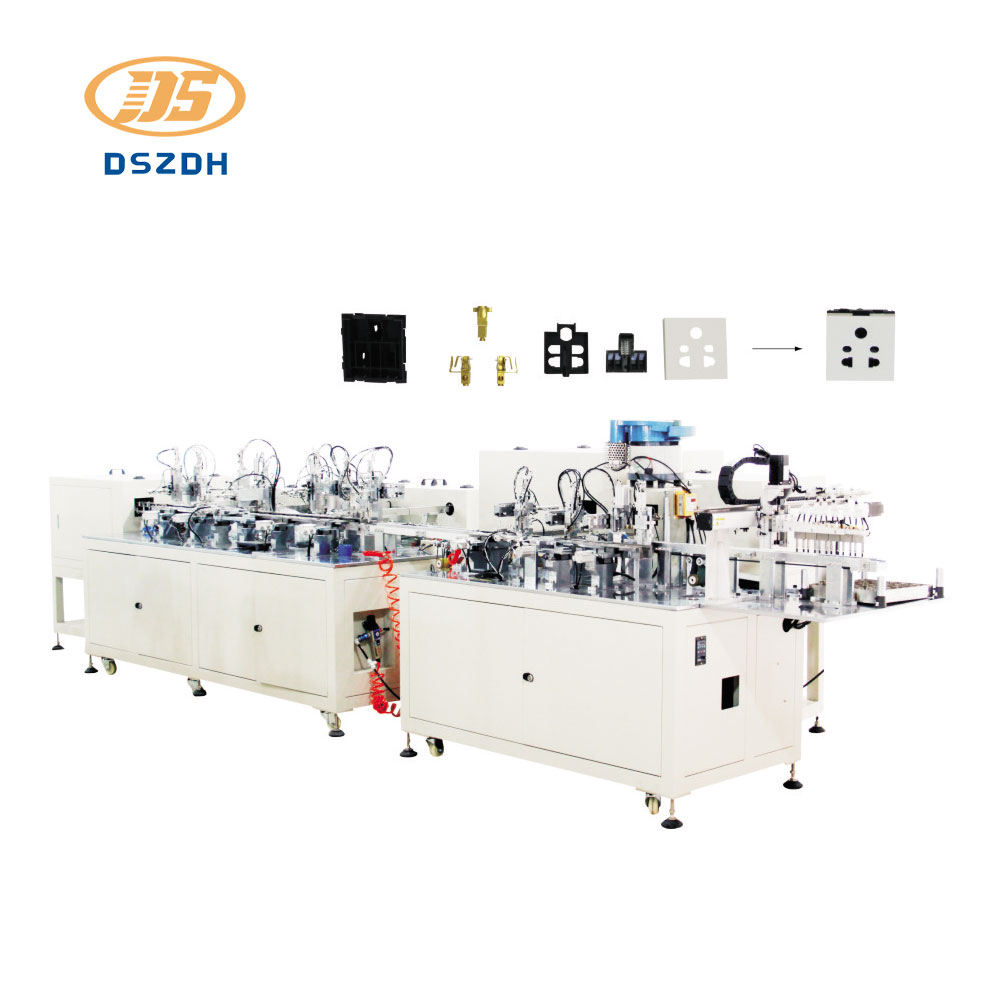Streamlining Maintenance: A Comparison of Manual Assembly and Three Hole Socket Automatic Assembly Machine Troubleshooting
2024-04-03
In the fast-paced world of manufacturing, downtime is costly. Whether assembling products manually or utilizing advanced machinery like the Three Hole Socket Automatic Assembly Machine, maintenance and troubleshooting procedures play a vital role in minimizing disruptions and maximizing productivity. However, the approach to maintenance and troubleshooting differs significantly between manual assembly and automated processes. Let's explore these differences to understand how each method optimizes uptime and ensures operational efficiency.
Manual Assembly:
1. Reactive Maintenance: In manual assembly, maintenance is often reactive rather than proactive. Operators typically address issues as they arise, such as equipment malfunctions, component shortages, or quality defects. This reactive approach can lead to unplanned downtime and production delays, as repairs may require time-consuming troubleshooting and repairs.
2. Limited Diagnostic Capabilities: Manual assembly processes rely heavily on human operators to identify and address issues. While operators may have basic troubleshooting skills, their ability to diagnose complex problems is often limited. This can result in prolonged downtime as operators attempt to identify the root cause of issues through trial and error.
3. Variable Skill Levels: The effectiveness of maintenance and troubleshooting procedures in manual assembly can vary depending on the skill level and experience of operators. Inexperienced operators may struggle to diagnose and resolve issues efficiently, leading to prolonged downtime and decreased productivity.
4. Interrupted Production: Maintenance and troubleshooting activities in manual assembly often require halting production to address issues. This interruption can disrupt workflow, delay order fulfillment, and increase lead times. In some cases, manual assembly lines may need to be shut down entirely until issues are resolved, further impacting productivity.
Three Hole Socket Automatic Assembly Machine:
1. Predictive Maintenance: Three Hole Socket Automatic Assembly Machines are equipped with advanced diagnostic capabilities that enable predictive maintenance. Sensors and monitoring systems continuously track machine performance metrics, detecting abnormalities or signs of potential failure before they escalate into critical issues. Predictive maintenance allows operators to address problems proactively, minimizing downtime and optimizing uptime.
2. Remote Monitoring: Many Three Hole Socket Automatic Assembly Machines feature remote monitoring capabilities, allowing operators to access real-time data and performance metrics from anywhere with an internet connection. This remote visibility enables operators to monitor machine health, diagnose issues, and troubleshoot problems without being physically present on the shop floor. Remote monitoring streamlines maintenance procedures, reduces downtime, and enhances operational efficiency.
3. Automated Diagnostics: Three Hole Socket Automatic Assembly Machines are equipped with built-in diagnostic routines that can quickly identify and diagnose issues with precision. When a problem occurs, the machine's control system can automatically generate alerts, pinpoint the root cause of the issue, and provide recommended corrective actions. Automated diagnostics streamline troubleshooting procedures, enabling operators to address issues promptly and efficiently.
4. Continuous Operation: Unlike manual assembly, maintenance and troubleshooting activities on Three Hole Socket Automatic Assembly Machines can often be performed while the machine is still in operation. This minimizes downtime and ensures continuous production, even during maintenance intervals or troubleshooting procedures. Operators can address issues in real-time, maximizing productivity and minimizing disruptions to workflow.
In conclusion, maintenance and troubleshooting procedures differ significantly between manual assembly and Three Hole Socket Automatic Assembly Machines. While manual assembly relies on reactive maintenance and variable operator skill levels, automated assembly machines leverage predictive maintenance, remote monitoring, automated diagnostics, and continuous operation to optimize uptime and ensure operational efficiency. By embracing advanced maintenance practices, manufacturers can minimize downtime, enhance productivity, and stay competitive in today's fast-paced manufacturing landscape.



